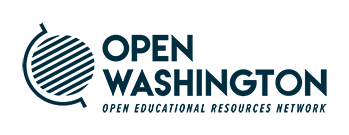Module 2: Copyright & License
Module 2: Copyright & License
Before we start talking about Open Educational Resources (OER), let’s briefly discuss the concepts that provide a foundational context to understanding OER, Copyright & License.
What is copyright?
Copyright, a form of intellectual property law, protects original works of authorship.
When is my work protected?
Your work is under copyright protection the moment it is created and fixed in a tangible form that it is perceptible either directly or with the aid of a machine or device.
This means that the work must exist in some physical form for at least some period of time, no matter how brief. Virtually any form of expression will qualify as a tangible medium, including the scribbled notes on the back of an envelope that contain the basis for an impromptu speech.
What does copyright protect?
Copyright protects original works of authorship including literary, dramatic, musical, and artistic works, such as poetry, novels, movies, songs, computer software, and architecture.
Copyright does not protect facts, ideas, systems, or methods of operation, although it may protect the way these things are expressed.
Copyright covers both published and unpublished works.
Do I have to register with the U.S. Copyright Office to be protected?
No. In general, registration is voluntary. Copyright exists from the moment the work is created. However, you will have to register if you wish to file a lawsuit for infringement of a U.S. work.
Although unnecessary, many still choose to register their works because they wish to have their copyright on the public record and have a certificate of registration.
So, if you created your original work in a tangible form, you are now a copyright owner. This connects us to another critical concept: License.
This content is drawn from:
- The United States Copyright Office, Copyright.gov, the public domain.
- Copyright and Fair Use, Stanford University Libraries, CC BY-NC
